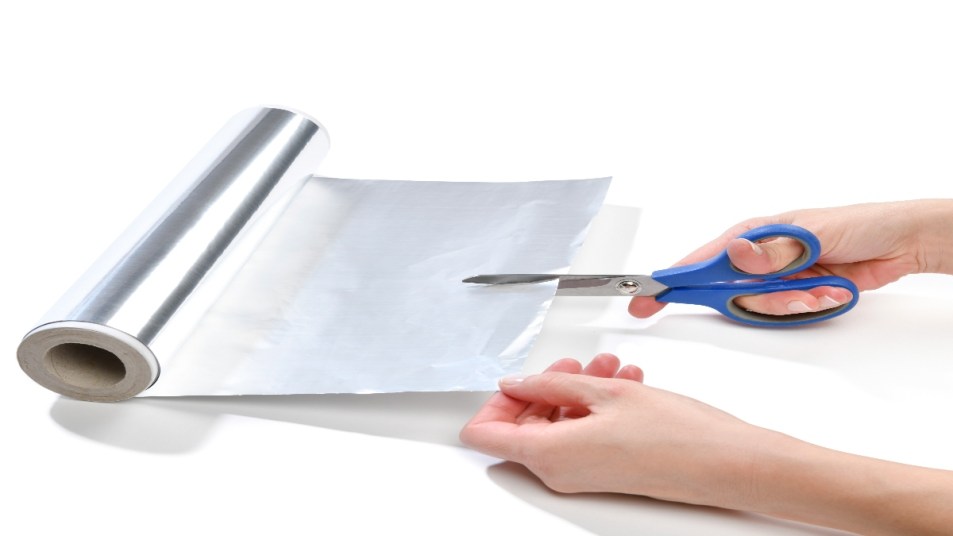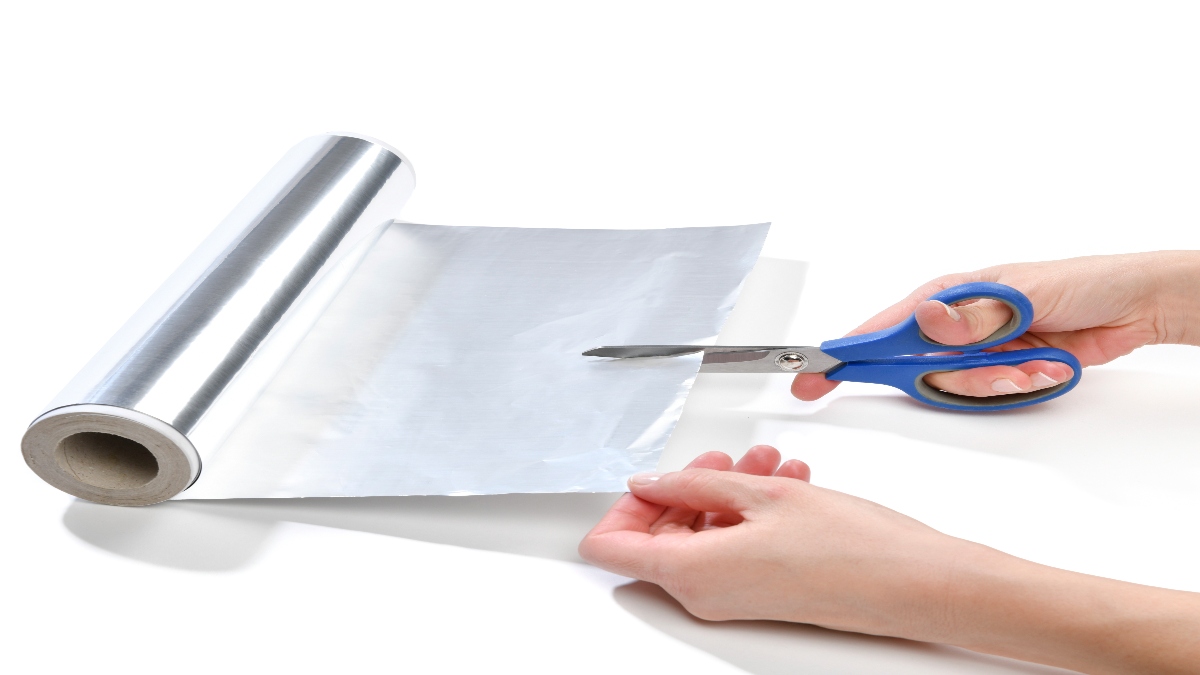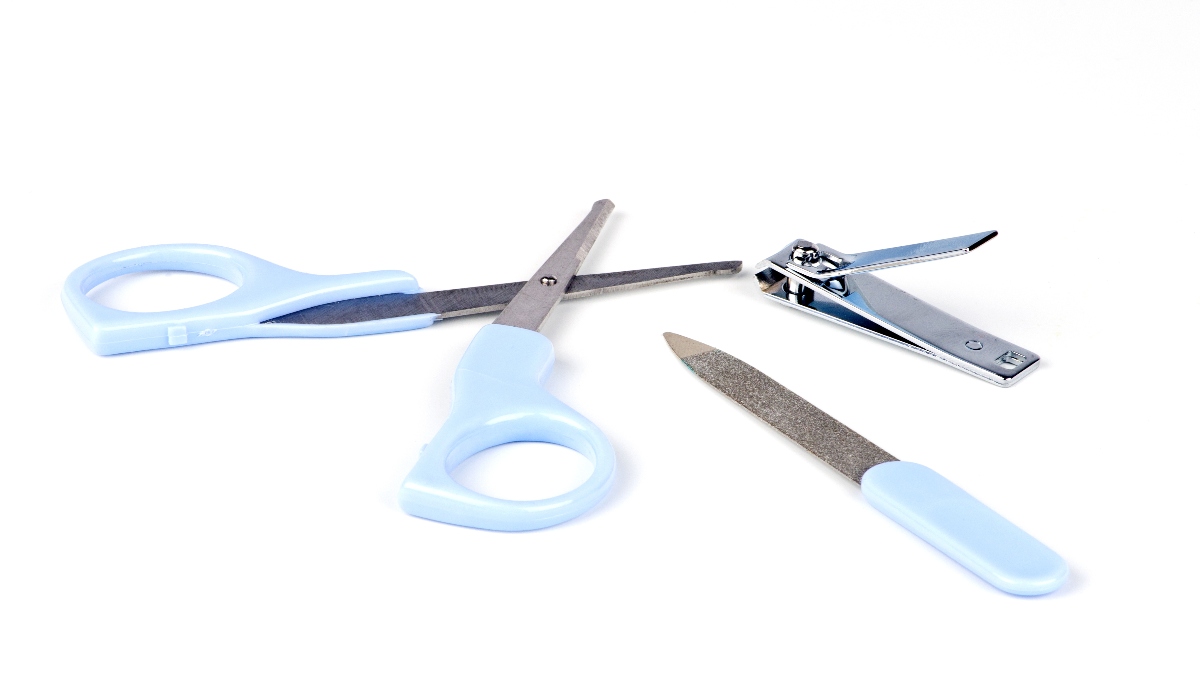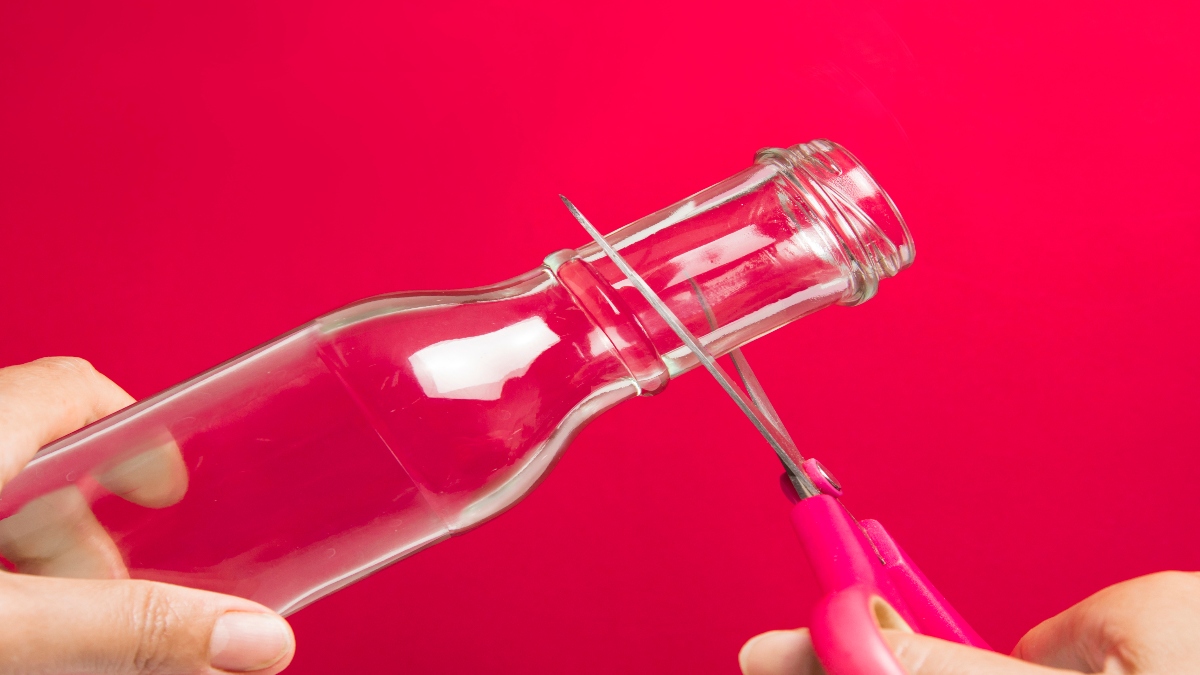How to Sharpen Scissors So They’re as Good as New — Genius Hacks Make It Easy
Plus, how sharper scissors can keep you safe at home!

Argh! It’s so frustrating when you need to shorten the hem on your dress or snip through wrapping paper for a gift you’re giving only to find the scissors that you’re using are, quite literally, not cutting it. But you’re in a rush and don’t have the time to run out and buy a new pair. No worries — they are salvageable, say crafting experts who note it’s easy to learn how to sharpen scissors of any kind using items you have lying around the house. Read on for their handy solutions.
The importance of sharp scissors
Sure, sharpened scissors move through materials more easily and smoothly and will provide consistent results when cutting fabric, paper, plastic or other materials. And we know that dull scissors can lead to uneven edges or damage to the material you’re cutting — which will end up costing you more time and money in the long run.
But what may come as a surprise: Sharpened scissors are actually safer to use than dull ones, says Inez Stanway, former elementary school teacher and founder of classroom-crafting blog, Monday Mandala. “You have less control with dull scissors. The unpredictability of how they might behave during a cut, whether it’s slipping or not cutting at all, increases the risk of accidents.”
How to sharpen scissors
“If you have a busy household, it’s great to have a variety of scissors” says Kathy Cano-Murillo, crafting expert and owner of the blog Crafty Chica. ” But not all are created equally, and so the method you use to sharpen scissors differs depending on the type of that need sharpening.
One method that all experts agree is the most effective for any scissor type is a sharpening stone, which can easily be purchased at craft stores or online (Buy from Amazon, $9.98). But if you don’t have one handy, these methods work in a pinch:
To sharpen regular household scissors: Grab the aluminum foil

The most common scissors in your home are most likely used for everything from cutting paper and opening mail to wrapping gifts and more — and they generally don’t have the sharpest of blades to begin with, so they get dull fast. The easy fix: Simply cut through a piece of aluminum foil, says Stanway. “The method essentially works because the soft metal of the foil helps to realign the slight bends and burrs on the edge of the scissors, making them feel sharper, fast.” Plus, cutting through the foil helps remove any tape residue, glue and general stickiness on the blade. (Click through for 16 brilliant uses for aluminum foil.)
To sharpen kitchen scissors: Use a plate
Often thicker than your average pair, kitchen scissors are designed to cut through all types of food — from herbs to chicken bones. While a knife-sharpening tool works wonders to sharpen kitchen scissors, if you don’t have around, Stanway suggests looking to another easily accessible item in your kitchen: “The unglazed bottom of a ceramic mug or plate becomes an unexpected hero,” she explains. “Ceramics are harder than most metals, and the rough, unglazed bottom provides an abrasive surface.
To do: Simply hold the plate upside-down in one hand and the open scissors in the other. Then, rub the scissor blade back and forth across the plate’s bottom 10-15 times. Then switch blades and repeat. When you drag the scissors over the ceramic, you’re essentially honing the blade, much like traditional sharpening methods but without specialized tools.
To sharpen kids scissors: Go for a nail file

“When it comes to kids’ scissors, which are inherently less sharp for safety reasons, I opt for steel nail file,” Stanway explains. “The abrasive quality of the nail file acts as a delicate sharpener. By running the scissor blades along the file, you’re giving them a mild sharpening without turning them into potential hazards.” And since they are essentially crafting scissors for the little ones in your life, they come across a lot of blade-dulling glue, goo and paint. The file helps rub all of that off.
How to sharpen fabric shears: Try a glass

Fabric shears are best used for cutting various fabrics, ribbons, yarn and string. But after making many great projects, these shears start to cut lines unevenly, taking crafting from fun to impossible. “It’s crucial they stay sharp, especially when working with intricate materials that don’t forgive a dull blade,” Stanway says. “I’d recommend periodic professional sharpening, especially for fabric shears. It maintains their precision and prolongs their life.”
But to save time and money, crafters agree you can do it at home with a glass bottle. Simply move the scissors in a cutting motion around the neck a few times as if you are trying to cut it off. The action of sliding the blades against the glass helps remove burrs and even out the blades’ edges. Just make sure to wipe the blades after, since some glass residue can accumulate on them.
How to maintain your sharpened scissors
Now that you have spent the time sharpening your scissors, maintaining their top-notch state will save you any cutting headaches in the future. Here, 3 easy tips:
- Clean them regularly: After each use, wipe the blades with a clean, damp cloth to remove any dulling residue. For more thorough cleaning, you can use a mild laundry detergent and a very soft brush to scrub the blades gently. “Just make sure to dry them thoroughly afterwards as moisture can lead to rust which leads to dulling,” Cano-Murillo explains.
- Store them like this: Place scissors in a dry, cool and clean environment to prevent moisture buildup. If your scissors come with a protective sheath or case, use it to keep the blades covered and protected. You can also hang them on a magnetic strip or store them in a dedicated scissor spot to prevent them from getting damaged or dull.
- Use your scissors for its intended use: Avoid using scissors for a job that requires a sharper blade like a knife or a box cutter. Using them to cut hard materials like metal, plastic or wire will just damage the blades, adds Cano-Murillo.
“One lesson I’ve learned (the hard way) is to have dedicated scissors for different tasks,” says Stanway. Her tip: Label each scissor so that everyone in the home knows what each one is to be used for.
For more tips on how to clean sticky scissors, click on the video below:
For simple ways to keep other household tools in great condition, click through these stories:
How to Clean Gardening Tools So They Shine Like New
Life Hacks Alert! Sharpen Dull Knives in Seconds With This Common Household Item
Get Your Silverware Spot-Free and Sparkling With These 6 Tips
















